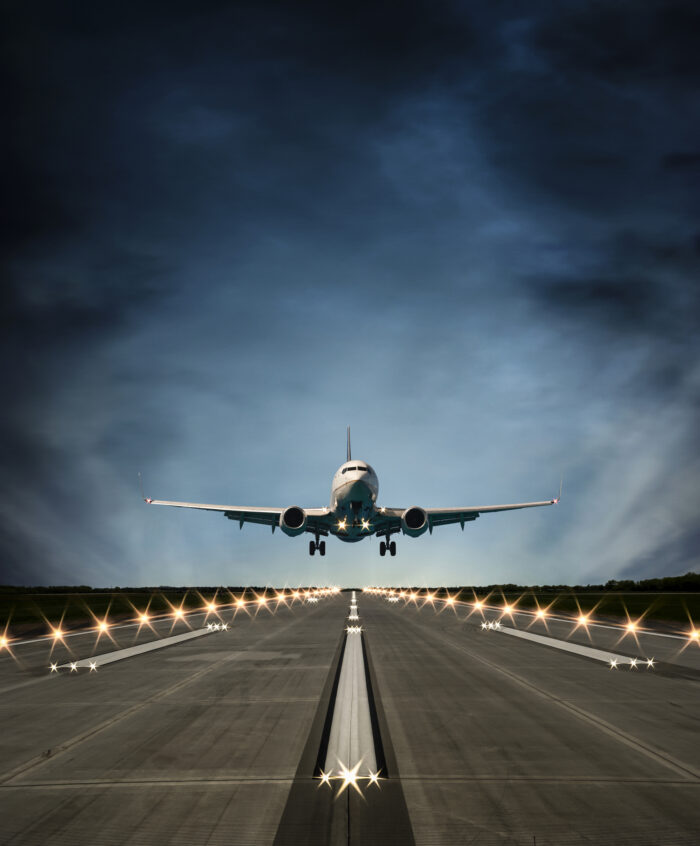Headed for a Soft Landing or a Hard Landing?

The Travail of Travel Today. Traveling by air today is arduous. Lost luggage, as is in “might be lost forever” could certainly dampen anyone’s travel plans.
Missed connections. Stranded. Forever. It seems the airline industry is no longer able to provide an easy, relaxed experience to a destination or vacation.
Friends I have spoken to are saying they are “dreading” having to fly anywhere. But determined to go on vacation they will go and suffer. Wow.
I used to travel a lot for work. I have over 3.5 million program miles with American Airlines. That does not include all of the other airlines I flew on.
On one particular flight, (not American Airlines) as we were landing it seemed that the pilot dropped us vertically out of the sky and onto the tarmac.
We hit the tarmac so hard it knocked the breath out of me. The overhead bins popped open, and luggage started flying everywhere.
No one was hurt but I would call that a HARD landing.
In today’s lexicon a soft landing or hard landing is NOT a reference to the ability of a pilot to land a plane smoothly.
Soft landing or hard landing are terms used to describe the future of the economy. Specifically, whether or not the Fed’s actions will push the economy into a recession.
There are different characteristics economists look at to identify a recession.
What direction is GDP headed? What is the unemployment rate? What is the inflation rate? How much has the Fed raised (or lowered) interest rates?
A hard landing refers to the severity of a recession. A soft landing means the economy has flirted with recession, but no one is dating.
In February of 2020 when the world shut down, the US economy went into a recession.
That was a “no brainer” recession. No economist, modest or otherwise, needed to wait for ANY data to know that the pilots of the economy hit the ground HARD.
When businesses are closed en masse, growth in the economy plummets.
When employees are laid off en masse, the unemployment rate soars.
What was unusual about the en masse recession is that it lasted only 2 months.
It was the shortest recession in the history of the economy.
It was over before anyone knew it or had time to acknowledge it.
What is happening now?
The goal of the Fed is to engineer a soft landing. A soft-landing means that growth slows but does not plummet. Unemployment increases, but to a tolerable rate. Inflation comes down.
In other words, a soft landing means the economy avoids a recession.
Where are we today?
Remember that one of the reasons for the Fed to increase interest rates is to slow growth and ultimately lower inflation.
Where we are today though is really unusual. The current unemployment rate is 3.6%.
Actually 3.6% is too low. A 5% unemployment rate is considered “full employment”. It means that for every 100 people in the workforce, 95 people are working. It is a rate consistent with moderate growth and low inflation.
With the unemployment rate below 5%, an increase in unemployment won’t be enough to derail the economy.
Growth (GDP) reported by the Bureau of Economic Analysis (BEA) for the First Quarter of 2022 was negative -1.6%.
In contrast GDP in 2021 was 5.7%.
Why has GDP gone from a positive to a negative number?
High inflation is part of the reason.
When inflation is high, spending by consumers slows.
The problem with inflation today is that factors driving inflation higher are coming from multiple sources globally: the war in Ukraine, higher oil and gas prices, ongoing supply chain issues, ongoing uncertainty about COVID.
We know that the Fed has been raising rates with the goal of reducing inflation. A natural consequence is that raising interest rates dampens consumer spending which in turn dampens growth.
Hmmm, this is a conundrum.
The conundrum is that the cause of high inflation today is a demand and a supply issue. Typically, inflation is caused by too much demand.
If consumers choose not to spend because of worries about a possible recession, that lack of spending is a lack of demand.
There is an expectation that second quarter GDP in 2022 will be negative. [1]
Not hugely negative. Not the 30% drop we saw in 2020. More like 2%. [2]
Negative GDP alone is not enough to declare a recession.
To sum up we have:
The unemployment rate is currently too low. A recession would push the unemployment number higher. Higher unemployment leads to►
A decrease in consumer spending which leads to ► lower growth. Growth is already negative.
Inflation is too high. Raising interest rates to fight inflation is a sticky wicket. It might work temporarily, or it might push the economy further down the recession path.[3]
My outlook is that we skirt the edges of a recession. Not a hard landing, not a soft landing, but a landing somewhere in between.
That’s it!
A Goldilocks Landing.
[2] The BEA reports second quarter GDP contracted 0.9%
[3] The Fed raises the overnight lending rate another 75 basis points
Federal Reserve Board – Implementation Note issued July 27, 2022
The Fed – Financial and Macroeconomic Indicators of Recession Risk (federalreserve.gov)

This website is for informational purposes only and does not constitute an offer to sell, a solicitation to buy, or a recommendation for any security, nor does it constitute an offer to provide investment advisory or other services by The Modest Economist LLC.
